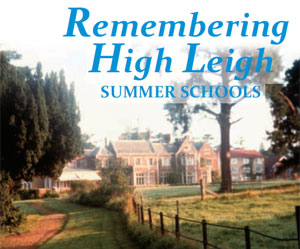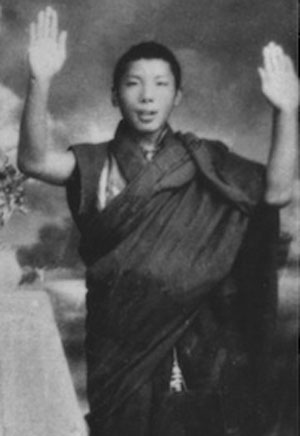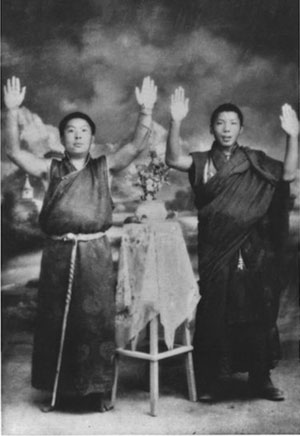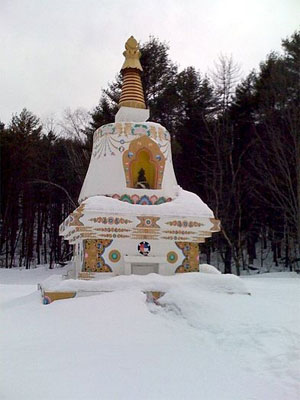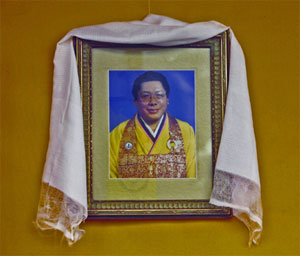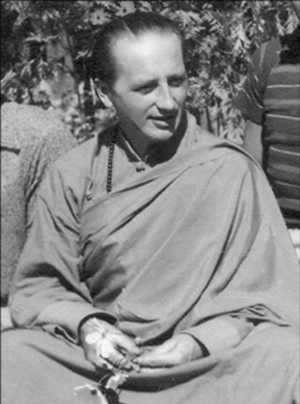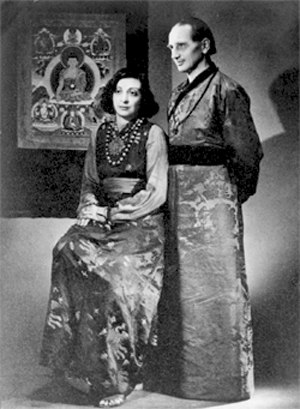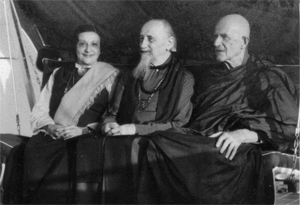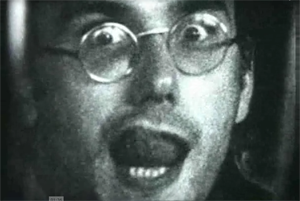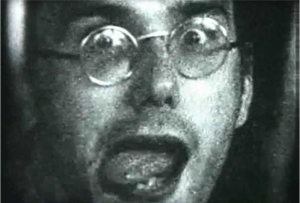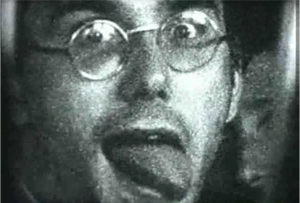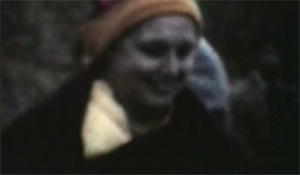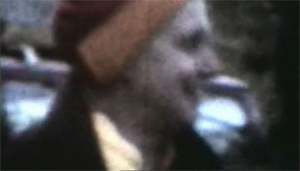D.S. Mirsky: A Russian-English Life, 1890-1939 [EXCERPT]
by Gerald Stanton Smith, Professor of Russian, Oxford University and Fellow G.S. Smith
2000
NOTICE: THIS WORK MAY BE PROTECTED BY COPYRIGHT
YOU ARE REQUIRED TO READ THE COPYRIGHT NOTICE AT THIS LINK BEFORE YOU READ THE FOLLOWING WORK, THAT IS AVAILABLE SOLELY FOR PRIVATE STUDY, SCHOLARSHIP OR RESEARCH PURSUANT TO 17 U.S.C. SECTION 107 AND 108. IN THE EVENT THAT THE LIBRARY DETERMINES THAT UNLAWFUL COPYING OF THIS WORK HAS OCCURRED, THE LIBRARY HAS THE RIGHT TO BLOCK THE I.P. ADDRESS AT WHICH THE UNLAWFUL COPYING APPEARED TO HAVE OCCURRED. THANK YOU FOR RESPECTING THE RIGHTS OF COPYRIGHT OWNERS.
Chapter 5: Writing Russian
In Foma Gordeiev, which I consider to be Gorky's masterpiece, there is an unforgettable scene where Foma's father Ignat watches the loss of his ship laden with goods. He knows that his entire fortune will go down with it, but his only feeling is admiration for the beauty of the spectacle. He will have his moment of exultation over his own splendid disaster, for he knows that he has it in him to begin again and build himself up an even greater fortune. (D. S. Mirsky, 1922)
RUSSIA OUTSIDE AND IN
A good number of the front-rank Russian writers and critics active in 1917 emigrated rather than stay on in the Soviet state. 1 There was something of a generational and genre split; on the whole, the older prose writers left, while the younger poets and critics stayed. Among Mirsky's contemporaries who had made a reputation before 1917, Akhmatova, Mandelshtam, and Mayakovsky remained in Russia, for very different reasons. Tsvetaeva left Russia to join her husband in Czechoslovakia in 1922. Pasternak, Viktor Shklovsky, and Count A. N. Tolstoy -- the last-named an aristocrat of fairly similar background to Mirsky -- went back to Russia in 1923 after spending some time in Berlin.
In August 1922, about 120 key intellectuals and administrators were expelled from Russia after Lenin decided that he could not put up with the potential strength of opposition that they represented.2 From among these men (all the prime targets were men, but their families were sent out with them), Mirsky soon came into personal contact with Nikolay Berdyaev, Sergey. Bulgakov, V. N. Ilin, and Lev Karsavin. The reaction of Mirsky's soon-to-be friend Suvchinsky to the expulsion expresses an irreverent view of these men as sanctimonious failures that was common among his and Mirsky's generation:
When the first group arrived (Frank, Berdyaev; [U. A.] Ilin) it felt as if some sort of individual selection of people was going on. All they've done now is simply to transplant from Russia to Berlin -- like a piece of turf from one cemetery to another, or like a piece of dead skin -- a cultural layer that has completely outlived its time, and for what? So that these people should stand at the head of the emigration, of course, so they should speak for it, and by doing so prevent anything being born that is new and alive, and consequently dangerous for the Bolsheviks.3
In 1922-3, after the returns and the expulsions, emigre culture began to crystallize as a consciously separate formation. Mirsky played an active part in it for several years. At the same time as he was writing on Russian literature for the English readership, he was steadily publishing in Russian for his fellow emigres. As with his critical writing in English, at no time did Mirsky promote Russian literature outside Russia at the expense of the literature on the inside. But at the same time, he did not hesitate to point out the difficulties faced by writers under the new regime, and he could still refer to himself late in 1925 as an 'anti-Communist'. 4
During the first two or three years of the post-revolutionary emigration, there was no insuperable barrier to communication between the literary intellectuals in emigration and those who had remained behind in Soviet Russia, and each side kept a keen eye on the other. Books could be published simultaneously inside and outside Russia; for a couple of years, 'Berlin-Petrograd', for example, was a common item on title-pages. It was always much easier, though, for those on the outside to, get hold of what was published on the inside. Maksim Gorky, who was expelled by Lenin in 1921 but remained fundamentally pro-Soviet, at first thought that the journal he edited from Berlin in 1923-5, to which he gave the hopeful title Dialogue, would be admitted into Russia and put on open sale; he was disabused of this idea by 1924.5 The idea of a permanent rupture was generally accepted only about 1925. The most poignant discussion of it is the lament that Vladislav Khodasevich published in the Paris newspaper Days, 'Over There or Over Here?', in which literature on both sides of the divide is said to be seriously infirm.6
Evidently, copies of the London Mercury carrying Mirsky's 'Russian Letters' reached the most famous literary Anglophile left in the country, Korney Chukovsky, and he wrote an appreciation to Mirsky, whose reply, written on 12 May 1922, has survived. Even allowing for the positive emphasis that would have been inevitable under these circumstances, Mirsky's letter shows that from the very beginning of his time outside Russia he believed that the emigre segment of Russian literature was not and could not be sufficient unto itself, much less set out on an independent and autonomous existence. Rather, it was and would remain a subordinate fragment of the literature as -a whole, whose centre remained inside Russia. And Mirsky wanted to take part in the work of the centre, not the periphery:
We on this side are dreading that an unbridgeable abyss will open up between us and you. Your letter is a sign that this is not so. Those who have stayed behind in Russia are for us like saints and martyrs for the faith [podvizhniki], and consequently, if Russian Culture survives, it will be due to you and your heroic efforts. We are no better than rats who have saved themselves from the ship, while you still might be destined to save the ship itself ... [The] Russians here are not up to much economically, and the English are nowhere near as interested in Russian culture as it might seem .... However, something will be done .... We will find the opportunity to move the English along in a literary sense.
In general, books from Russia are our daily bread: I enclose my article about the first two volumes of Blok from the 'Times Literary Supplement'.7 Please give my most sincere greeting to Anna Andreevna [Akhmatova].8
And may God grant you strength and success.
D.S. -Mirsky9
This would seem to be the contact that led to the most surprising item in Mirsky's bibliography, an essay on contemporary English poetry that was published in Soviet Russia in 1923 in the journal The Contemporary West, which was edited by Chukovsky and Evgeny Zamyatin. This was the only piece Mirsky published in Russia between 1911, when his collection of poems came out, and 1932, when he returned from emigration. In his letter to Mirsky, Chukovsky had evidently asked Mirsky to set about the task of publicizing and translating the literature currently being published in Russia. The most immediate result was Mirsky's translation of Zamyatin's story 'The Cave', which soon became a classic of the revolutionary period.10
It was in London, rather than on the Continent, that Mirsky made personal contact with the young Soviet prose whose rise he saluted several times shortly after he began his teaching career, as he undertook to do in his letter to Chukovsky. The novelist Boris Pilnyak (1894-1937), who was rapidly making a name for himself as one of the most significant post-revolutionary literary figures after the publication of The Bare Year in 1922, left Russia for a four-month trip to England on 1 May 1923. Pilnyak had wangled an official visit to. the London trade delegation of the newly recognized state, and off his own bat he attempted to set up a Russian chapter of the PEN Club; the organizers wanted Gorky, but he considered the project too politically sensitive. While Pilnyak was in London, he met Mirsky. Pilnyak reported to Chukovsky from England that in his view Mirsky 'was born a hundred years too late'.11 In May 1924 Mirsky wrote an introduction to a collection by Pilnyak that was called in English Tales of the Wilderness; at this time and also later, he was in general uncomplimentary, arguing that Pilnyak was too undisciplined mentally to be a great writer of prose. It is clear, though, that Mirsky and Pilnyak, however much they might have disagreed with each other, shared a fondness for extended discussion over a bottle, the favoured location being the back room of Mrs Makarova's Russian bookshop near the British Museum.12
Apart from this chance contact with a prominent literary Russian, Mirsky tried to keep up with his schoolmate Viktor Zhirmunsky, who had remained in Petrograd, now renamed Leningrad. In a letter to Suvchinsky of 19 December 1924 Mirsky says that he is in correspondence with Zhirmunsky and has been receiving books from him, but that the copy of 'my English Avvakum' (by which Mirsky means the translation by Harrison and Mirrlees with his preface) has been returned stamped 'Non-admis'. No letters from Mirsky have turned up in Zhirmunsky's archive; it may well be that he destroyed anything he had relating to Mirsky after the latter was arrested. But this, and the much more important letter to Chukovsky, constitute the only evidence that has surfaced so far that Mirsky was in touch with literary people in Russia before he managed to write to Pasternak in 1927.
BOILED LETTUCE
Throughout the 1920S the principal site of Mirsky's emigre activities was Paris. The first surviving letter written from France back to England is to Sir Bernard Pares, dated 20 August 1924, and addressed from 214 rue de Becon, Courbevoie. This is the house that Mirsky's mother and sisters had settled into when they moved from Athens at a date unknown, and it was to serve as Mirsky's Paris base until it was put up for sale after the death of his mother.
The addresses of Mirsky's letters and the announcements in them of his travel plans show that he would make his way to Paris as soon as possible after the end of the university term, and that he would only return to London at the last minute to start his teaching. From Paris, Mirsky ventured far and wide in France; during his first years he was in Quimper in Brittany, Nantes, Cannes, and Normandy. In January 1926 he spent some time in Pau.13 In August 1927 he stayed with the Bassianos at their villa near the then exclusive Atlantic resort of La Baule-les-Pins, Loire Inferieure. On 23 September 1927, Mirsky wrote to Salomeya Halpern from perhaps the most spectacular hostelry of all those whose stationery he used, the Grand Hotel du Raisin de Bourgogne in the town of Niort. Vera Traill, who was no stranger to the kitchen, and who once published a Russian cookbook with her friend Moura Budberg, said:
When he came [to France] with money in his pocket, he was a terrible glutton, terribly interested in food, and he would make expeditions. He had the gastronomic guide . . . and he was perfectly capable of taking a trip for just one night, let's say to Lyon, just to taste a special chicken dish .... In Paris we went to terribly expensive, spectacular restaurants .... I remember one of them where we had something I wouldn't know how to cook myself-boiled lettuce. It's the same as spinach but made with lettuce. Anyway, he knew where to go, where the thing to eat was this lettuce.
Marina Tsvetaeva saw all this from a different perspective in a letter to Yury Ivask in June 1934, by which time Mirsky's diet had become rather more austere:
What's my favourite food, you ask. Does it really matter? I hate kasha, every sort except the black, and even in Moscow in 1920, the most savage year, I didn't eat millet. That aside, I'm very unassuming and simple -- I eat everything, and I don't pay much attention to it, which during our friendship made Mirsky heartily disappointed (he was a passionate eater and expert, as very isolated people often are). He took me -- in secret conspiratorially-connoisseurily -- round the best restaurants of Paris and London. 'All you do is talk! he once exclaimed, grief-stricken, 'and you don't care what you're eating -- they might as well be servmg you hay!' Hay maybe, but not millet, though. 14
'THE POETRY OF WILL AND REASON'
The general evolution of Mirsky's involvement with Russian emigre culture is clear-cut: to borrow once more one of his own favourite images it traced a rising line until 1926, then a plateau until 1929, and after that it fell away steeply. From the time Mirsky arrived on the emigre scene in 1922 until the summer of 1926 he was regarded on the whole as a talented but untried younger colleague by the leading lights in the literary emigration. He compelled them to take him seriously, but he then managed to alienate them completely. After 1?26 he withdrew further and further from literature, and by the end of 1929 this process was practically complete. He returned to writing literary criticism in Russian only after he arrived back in Moscow in 1932, and then, it would seem, primarily because he was directed to do so rather than by choice. In the interim, during his last three years in emigration, he was writing mainly in English on historical and political subjects.
Mirsky's earliest piece of critical writing in Russian for the emigre readership after he came to London turned out to be a non-starter. It was a survey art1cle on the current state of Russian poetry, submitted to Russian Thought (Russkaya mysl'), the journal edited by P. B. Struve, in June 1922. Soon after this, the journal encountered insuperable financial and organizational problems, and this became the earliest of several articles by Mirsky that were first published only long after his death. 15 In this case, though, there may well have been another reason: a good deal of the factual material in the article especially its account of which poets were in which places, was rapidly over~ taken by events as the division between emigre and Soviet literature coalesced . Struve may well have decided that, despite the brilliance of Mirsky's literary Judgements, there was too much in the article that events had rendered inaccurate.
The most significant aspect of this article is its bravura tone, which is set by the first sentence: 'For about a quarter of a century now Russian poetry has been experiencing a period of flowering which has taken it from the· debased and insignificant situation of the 1890s to its dominant situation of today.' This v1ew contrasts strongly with Mirsky's attitude about five years later when he saw not just th.e poetry of his youth, but all Russian literature of that period, as obsessed w1th death. The article culminates with a discussion of three women poets who lapsed into obscurity soon after the date of Mirsky's article: Anna Radlova, Mariya Shkapskaya, and Irina Odoevtseva. He had probably known Radlova before 1917, and met her again after he went back to Russia; he came to know Shkapskaya in the 193os; but he never seems to have met Odoevtseva (1895-1991), who emigrated with her husband Georgy Ivanov (1894-1958), and survived long enough to be able in 1987 to go back and die in the city she left seventy years previously, soon before 1t was renamed once more and became St Petersburg again.
The article's final paragraph presents a conception of poetry that Mirsky was to restate many times in his later writings; he was always on the s1de of 'will and reason':
Mandelshtam declared that 'Classicism is the poetry of Revolution'. And if by Revolution is understood that which Peter the Great began, there is a certain amount of truth in this. Classicism is active poetry, the poetry of Will and Reason -- teleological art, antithetical to Romanticism, which is passive, determinist art. 16
A LITTLE ANTHOLOGY
On 8 August 1923, at Quimper in Brittany, Mirsky finished the introduction to his Russian-language The Russian Lyric: A Little Anthology from Lomonosov to Pasternak the first book he published after his youthful collection of poems in 1911. The crisp Notes that Mirsky included at the back of his anthology make a highly instructive contrast with those he supplied m the same year as his own anthology was published, 1924, for Maurice Baring's Oxford Book of Russian Verse. Writing in English for Baring, Mirsky can take nothmg for granted:
Konstantin Konstantinovich Sluchevsky, b. 1837 in St. Petersburg. Served in the Foot Guards and later on in the Civil Service; he was for a long time editor of the official Pravitel'stvennyi Vestnik (Government Gazette). His first poems appeared in 1860, but he was hissed off the literary stage by the Anti-Verse critics and did not appear m book form until 1876. He died in 1904. He is the most remarkable and original poet of an unpoetical period. He had real genius and a wonderfully alert and receptive mind. Much of his best poetry is metaphysical, but he is probably at his best in his 'geographical' poems (especially in his poems of the North of Russia). He was heavily handicapped, for never in any Christian country (except perhaps in America at the same time) was the level of poetical craftsmanship so low as it was in Russia m the last lap of the nineteenth century. His verse is more often than not uncouth and clumsy, but his ideas are always original and stimulating.17
Easily recognizable here are some permanent features of Mirsky's evaluative thinking: the evolution of poetry describing a 'falling line', the deleteruous effect of 'social' criticism, the importance of work and craftsmanship, , the supreme importance of thought in poetry. There is even evidence of his peculiar staff officer's fascination with terrain. By contrast, here is Musky's note on the same poet from his own anthology; the translation is deliberately literal:
Konstantin Konstantinovich Sluchevsky, b. 1837 in Spb t 1904. Sluchevsky was a tongue-tied genius. An insatiable love for the concrete multiplicity of physical existence; a sharp eye, directed all around him; the vigilant work of powerful thought to which the 'light yoke' of ideas is absolutely alien -- these could have made of him a poet of the first magnitude. His decadent times denied him the armament he needed. This is Demosthenes with his tongue cut out. Sluchevsky's lofty tongue-tiedness is perhaps his principal attraction but it is indisputably annoying. He liberates himself from it rarely and not always appropriately, and in doing so he lapses (especially in the early poems) into cheap prettiness. His first poems began to appear in the second half of the 1850s, but were hissed at by the critics; from 186o until 1876 he was silent. In our age when formal tasks are dominant, Sluchevsky has little chance of attracting attention. 18
This incisive verve, spiked with the occasional bold metaphor, is entirely characteristic of Mirsky's Russian-language criticism. The two notes cover the same ground and are consistent with each other, but the English note primarily imparts information, while the Russian one is above all impressionistically evaluative. Equally instructive is the contrast between Mirsky's notes on those (very few) individual poems that happen to appear in both books. For Blok's 'The Unknown Woman' Mirsky supplies Baring with two short dry sentences: 'The most widely popular of Blok's poems. The scene is a summer resort in the environs of St. Petersburg.'19 For his Russian readers, Mirsky can display the inwardness of his understanding:
The Unknown Woman, dated 24 March 1906 Ozerki, from An Unexpected Joy. An extremely well-known poem. It is central for an entire period; in it some lyric themes intersect that are repeated in different combinations. Here Blok for the first time achieves a synthesis of his dissonances, combining sharp, grotesque naturalism with a romantic melody (the second half); remarkable here is the 'magical', 'forced' disposition of vowels. 20
The second name in the subtitle of Mirsky's anthology, 'From Lomonosov to Pasternak', was a shocking provocation in a Russian emigre publication even before the battle-lines had hardened, because -- apart from the obscurity of the little poetry he had published by then -- Pasternak had declared allegiance to the Soviets by returning to Russia. Mirsky's subtitle is one of the earliest unambiguous proclamations in Russian literary history of Pasternak's major status.
Mirsky is at his most incisive in discussing what he calls his 'Salon des Refuses'. The poets of the modernist period for whom he finds no place in his anthology seem in part like a deliberate provocation to the emigration, because although he finds room for one poem each by Balmont and Gippius, he does not include Bunin and Khodasevich. Mirsky shows off his insider's knowledge by apologizing for not including some of the cult poets of his generation: Konevskoy, Dobrolyubov, Komarovsky, and -- another pointer towards some sort of personal connection -- Elena Guro. But the poet whose absence was most remarked upon, and her omission persistently used as a stick to beat Mirsky with in view of what happened soon aftenhe appearance of the anthology was MarinaTsvetaeva; it is in this preface that Mirsky used the phrase 'a talented, but hopelessly undisciplined woman from Moscow'.21
Tucked away in his note on the second-rate poet Apollon Maikov (1821-97) is a passage in which Mirsky came nearer than anywhere else to defining what he detested most in Russian poetry, an attitude that lies behind all his negative assessments: 'The self-satisfied pomposity of his "concern with ideas" (ideinost'), the eclecticism of his taste, the neutrality of his verbal texture make him almost into a blank space for the modern reader. Maikov made entirely real the ideal poet "according to Belinsky" with his "artistry", "thinking in images", and concern for public opinion. '22 Instead of these qualities, Mirsky admired poets who wrestle with their own thought instead of received ideas, expose 'the resistance of the material' in the linguistic surface of their texts so that the poem is manifestly a thing made, and whose concerns are aristocratically elitist rather than populist.
THE EMIGRE PRESS
Mirsky made his debut in January 1924 in a periodical based in Paris, The Link (Zveno). This journal was founded as a literary supplement to the leading Russian newspaper in Paris, The Latest News, the nominal editor being that of the main paper, P. N. Milyukov, who was joined by the almost equally nominal M. M. Vinaver;23 the actual work was done by Solomon Vladimirovich Pozner (1876-1946). The Link appeared from 1923 to 1928.24 It carried a wide variety of articles on· current literary history. The chief literary critic was Georgy Adamovich, but an increasingly prominent part was played by the highly gifted but wayward Nikolay Bakhtin (1894-1950), who had served a stint in the Foreign Legion. He has remained in relative obscurity, overshadowed by his vaunted younger brother Mikhail. 25 Mirsky gave The Link several substantial pieces about current English literature in 1924 and 1925, including what appears to have remained the only serious essay ever written in Russian on the work of Maurice Baring.26
In 1925 Mirsky began contributing to the most important Russian 'thick journal' of the inter-war period, Contemporary Notes (Sovremennye zapiski), which came out regularly from 1921 to the fall of Paris in 1940, edited by a notoriously philistine group of former SRs. Three of his reviews are particularly important. One of them concerns the earliest collected edition of Babel's stories; the others deal with the debuts in prose that had recently been made by the poets Mandelshtam and Pasternak. Mirsky was among the very first critics to argue for the significance of these now long-canonical texts. 27 Besides these, in 1926 he published the first ever article-length assessment in Russian of a long poem by Tsvetaeva. 28 And, as we have seen, he also gave to Contemporary Notes a composite review of nine of the classic texts of Russian Formalist criticism that had come out in its final years of glory, 1923-4.29
Mirsky's most substantial contribution to Contemporary Notes was in fact his first, an obituary of the poet who had been one of the models for his own youthful efforts, Valery Bryusov, who died in October 1924 after spending his last years as a member of the Bolshevik party. Mirsky's obituary culminates with some acid remarks about Bryusov's political opportunism, which in a sense foreshadowed his own ten years later, anticipating some of the charges that would later be made against himself when he declared for the Soviets.
In late 1925 and early 1926 Mirsky also contributed some incisive pieces on current English literature, including articles on Belloc, George Saints bury, and living poets, to Days, the newspaper edited by the former head of the Provisional Government, Aleksandr Kerensky. In 1926 Mirsky also contributed important articles on Tsvetaeva and Esenin to the most explicitly left-wing 'thick journal' of the emigration, The Will of Russia (Volya Rossii), which was published in Prague for a decade starting in 1922. The Esenin obituary contains one particularly noteworthy passage where Mirsky makes some ominous remarks about the doomed nature of his own generation:
Esenin simply was a poet, while Nadson was not. But their functions within the social organism were similar. Both of them concentrated within themselves, with special power for the average contemporary reader, all the weakness and anguish of their generation. The manner of death of each is significant -- Nadson's tuberculosis and Esenin's noose. The first symbolizes the limpness, powerlessness, and sterility of the 'men of the 188os'. The second symbolizes the emptiness, the restlessness, the violated state [ograblennost'] of our generation. Nadson's was a sickness of power. Esenin's was a sickness of faith. Nadson could not act. Esenin could not believe. Unbelief is the root of Esenin's tragedy.30
The most celebrated elegy on Esenin was written by another member of his generation, Mayakovsky. The poem has a closing couplet that became a byword for Communist commitment: 'In this life, to die is nothing hard, / Making life is harder, and by far.' Mirsky's next obituary for a major poet with whom he identified himself was to be about Mayakovsky, with whose own suicide these words took on a ghastly new resonance.
THE WELL-INTENTIONED
Mirsky's final involvement as a contributor to an emigre publication edited by someone else came about in 1925-6 in connection with a short-lived and essentially amateur project by another emzgre prince, Dmitry Alekseevich ' Shakhovskoy. He published two almanacs whose title uses the adjectival noun· often found in the diary of Mirsky's mother, The Well-Intentioned. The first of these almanacs brought together in uniquely broad church fashion a number of eminent writers in the emigration who were soon to become irreconcilable enemies and would no longer be seen between the same two covers. In his dealings with Shakhovskoy, Mirsky speaks condescendingly, and as a definite advocate of 'the left' in literature. When he is writing in Russian, as opposed to English, he resists style-editing: 'Do not change particular words, and retain my punctuation as far as possible. I'm afraid that in general the article has come out too political, and what's worse is that it's completely disconnected. Malheureusement on n'ecrit pas ce qu'on veut mais ce qu'on peut.'
The article concerned was 'On the Current State of Russian Literature' , in which Mirsky makes a trenchant statement of general principle and some concise literary assessments. As living classics he cites Akhmatova, Zamyatin, Khodasevich, and A. N. Tolstoy (with some reservation about the last-named). The remaining living writers are then mustered into' groups. 'Genuine, fully formed masters' who are continuing to develop include Mandelshtam, Tsvetaeva, Pasternak, and Babel. Those who have stopped developing include Mayakovsky, Aseev, and perhaps Tikhonov. Promising beginners include Artyom Vesyoly and Selvinsky. Worth mentioning in other categories are Leonov, Zoshchenko, Esenin, Pilnyak, Nikitin, perhaps Lidin. The tail-enders in this list are dealt some stinging remarks:
Genuinely talented and clever, but lacking any 'inner content', a journalist and also 'a slave to authority' and, what's worse, to the consumer: Erenburg.
Almost a 'man of genius', but a completely undisciplined31 journalist who cultivates his indiscipline but is the father of almost all the ideas by which contemporary aesthetics lives: Shklovsky. 32
Mirsky notes as he goes through these names the high proportion of Jews among them; he uses the term standard in the late Tsarist administration, inorodtsy, 'aliens'. He eventually apologizes for the fact that of all the names he lists, only one is 'completely white': he has in mind, of course, Khodasevich. This leads to the second half of the article, which condemns the use of political criteria in judging literature, a sin committed not so much by the Bolsheviks, says Mirsky, as by the emigration.
MIRSKY AND CONSERVATISM
By 4 February 1926, Mirsky had finished his article for the second and final issue of Shakhovskoy's almanac, 'On Conservatism', which, he remarks in his accompanying letter, he hopes 'is not too ill-intentioned':33
'The reader you speak about (there is another kind, but there are fewer of them) is guided by two laws: intellectual laziness and the fear of making a fool of himself Literature has to keep him occupied and cheer him up, "like tasty lemonade in summer".34 Be is not prepared to expend any effort. Literature, like music in a restaurant or cinema, like the cinematograph, is rest and relaxation. It therefore has to be immediately comprehensible, and to achieve that it has to follow familar models. A small amount of innovation is fine; it stimulates the appetite and tickles the nerves .... The educated reader knows that one should take an interest in what is new and that art must renew itself But he also knows from bitter experience that there are many charlatans and impostors, that he can't distinguish between them and the "real" ones, and it's therefore easy to make a fool of himself by saying that Igor Severyanin is a great poet, while Khlebnikov's a clown. He therefore entrenches himself inside the wholly dependable classics, making common cause with them according to their degree of deadness, or with what look to him like the least innovatory of his contemporaries according to their degree of sclerosis. You musn't reproach the reader for doing this, of course. Too much of his energy goes on following the ups and downs of the stock market, or to earning himself a salary, and there's none left for reading "incomprehensible" poets, as you call them.'
'But they really are incomprehensible.'
'Everything is incomprehensible to someone who hasn't the time to comprehend. Art is the creation of new values ... .'
This last sentence caught the fancy of Jane Harrison; she wrote from Cambridge on 9 August 1926:
'Art is the creation of new values' [Harrison cites the phrase in Russian] now that is really worth saying & to me the most illuminating thing I have read for a long time with more stuff in it than a whole decade of Pontigny analysis.
I have often wanted to ask you to formulate for me the reactionary and revolutionary element in yr outlook but I did not feel I knew you quite well enough (asking a person to state their opinions is really more intrusive than asking the amount of their income)35 & now you have done it unasked.
By the next time Mirsky wrote to Shakhovskoy he had delivered his lecture on 'The Ambience of Death in Pre-Revolutionary Russian Literature', which was to become notorious. Mirsky offered this piece to Shakhovskoy for publication in The Well-Intentioned, but then evidently changed his mind, and saved it for his own journal, Vyorsts, even though it would miss the first issue. The last letter of the correspondence with Shakhovskoy dates from 17 June 1926. Mirsky complained that Shakhovskoy was a bad correspondent -- not knowing that during the preceding couple of months Shakhovskoy had gone through the decisive phase of the evolution that led him to choose the path diametrically opposite to the one that Mirsky soon opted for: he gave up the world entirely and went to Mount Athos in order to study to become a priest of the Orthodox Church. He would end up as one of the most eminent clerics of the emigration, known in the highest office he occupied as Archbishop Ioann of San Francisco and the Western United States.
By 1926, the year in which the first volume of his English-language history appeared, Mirsky had thus made an appearance in all the principal periodical publications of the Russian emigration. As a sort of epitaph to this involvement, he then published a harshly critical review of the back issues of Contemporary Notes and The Will of Russia in the first issue of the journal he founded himself, Vyorsts, and left himself with no way back into the mainstream. 36
THE EURASIAN MOVEMENT
In his dialogue on conservatism, Mirsky set down one particularly significant passage about his relations with his fellows in the emigration:
'Tradition is like Ariadne's thread -- once dropped, it cannot be picked up again. One can take one's stand only on a directly precursive tradition that has not yet been broken. Restoration never happens, either in politics or culture. The new must be new, not yesterday's stuff warmed up. It must be revolutionary, it must look forward and not back. True, it sometimes dons a mask that's got up to look like the old. But that's only a mask. You mentioned the Eurasians. They have one face but two souls, which "war with each other, alas". If the soul wins that wears the face, they will lose all significance. If the soul wins whose face wears the mask, the soul that is organically related to the future, they will become the greatest cultural force of tomorrow.'
Starting in 1925, Mirsky involved himself more and more deeply with these mask-wearing men who had two souls, the men of the Eurasian movement.37 The initial contact took place in September 1922, when Mirsky visited Berlin and was introduced to Pyotr Petrovich Suvchinsky, one of the four founders of Eurasianism. Though this impression may be the result of the fact that more evidence concerning it survives than concerning any other -- 163 letters by Mirsky written between October 1922 and September 1931 -- Mirsky seems to have formed a closer relationship with Suvchinsky, and for longer, than with any other person he met after he left Russia.
Suvchinsky (1892-1985)38 was born in Kiev and educated in SfPetersburg; he went to the Tenishev school, like Mirsky. He became a musicologist and took part in musical journalism immediately before the First World War; he was then found unfit for military service. In emigration he became an amateur of the arts whose main interest remained music; his practical abilities and/ or dedication as pianist and singer never seem to have been sufficient for him to make a career as a performer. Suvchinsky first lived in Sofia, where the Eurasian movement began. He moved to Berlin at some time in 1922, then to Paris in 1925, and remained there to the end of his life.
As soon as Mirsky got back to London from Berlin in the autumn of 1922, with his customary expeditiousness he published three English-language accounts of the Eurasian movement, all of them positive.39 In a letter of 7 September 1922 to P. N. Savitsky, Suvchinsky claimed Mirsky as a convert, and in 1923 charged him with forming a Eurasian group in England.40
The Eurasian movement was a complex and tangled conglomeration of ideas . and personalities, policies, theories, and agendas. By the end of the 1920s it had spawned a very substantial body of printed documents. They include a series of collections of articles, several monographs, and a chronicle dealing with the organization's public activities.41 Eurasianism is best known, indeed almost exclusively known, in its ideological aspect, which has been confidently summarized many times. By far the clearest summary of its ideology in its initial phase (1921-6) is by Mirsky, an article that stands as one of the best examples of his ability to boil down complex notions to their essentials.42 The article was written in 1926, when Mirsky was feeling maximally benevolent towards the movement and the personalities involved in it, and just at the time when he himself was becoming a leading participant. Several further summaries of Eurasian ideology were made long after the demise of the movement by scholars outside Russia.43 Until the late 1980s, the movement was not an approved topic of research and discussion inside Russia. After the fall of the USSR, the Eurasians' attempts to conceptualize a post-Communist Russia became of great interest and relevance, and there began a spate of republications44 and reinterpretations.45
The formal beginning of the movement was marked by a collection of ten essays that appeared in Sofia in 1921 under the title Exodus to the East, edited and written by four emigres who had landed up there after making their way out of Russia by various routes: Prince Nikolay Sergeevich Trubetskoy (189o-1938), Georgy Vasilievich Florovsky (1893-1979), Pyotr Nikolaevich Savitsky (1894-1968), and, as we know, P. P. Suvchinsky. How exactly the four got together and from whom the original impetus came to produce the book has not yet been clearly related. All four original Eurasians, like Mirsky, were in terms of social and academic background and upbringing metropolitan Russian intellectuals from the dvoryanstvo, but they had different areas of specialization. Trubetskoy was the only one of them who had published any significant proto-Eurasian writings before the 1921 collection, and he was clearly the principal ideologue. But he was always a reluctant leader. He was an academic dedicated to research in his specialist subject; in emigration at the University of Vienna he held one of the most prestigious chairs in Slavonic studies, and he was soon to emerge as one of the greatest theoretical linguists of the twentieth century if not of all time.46 His commitment to his academic work grew stronger as the 1920s went on, and eventually led him to resent the time and energy he was called on to spend on his unruly brainchild, which from his point of view kept on side-slipping into politics and away from the speculative ideas that interested him. It would appear from his earliest writings that as an adolescent, in strong contrast to Mirsky, Trubetskoy conceived a violent antipathy towards Western culture, and British attitudes in particular.
Savitsky was an economist and geographer who had been a favourite pupil of P.B. Struve and had worked with him in the White administration in the Crimea. He responded immediately to Trubetskoy’s early publications, and he was to prove the most enthusiastic and persistent proponent of Eurasianism among the original quartet. He was also the most prolific author among them; indeed, he was something of a graphomaniac, and the knotty loquacity of his writings is one factor that has deterred scholars from tackling his archival legacy.47 Mirsky eventually came to view him as a self-righteous bigot.48
Florovsky was an Orthodox theologican, and very soon publicly distanced himself from the movement.49 Florovsky and Savitsky, however, were brothers-in-law, and apparently retained a close personal relationship. Florovsky was replaced as the Eurasian house theologian by Lev Karsavin (1882-1952), the ballerina Tamara’s brother, who suffered all his life from not being as rich and famous as she was.50 He was one of the group of intellectuals expelled from Russia in 1922, and he became closely involved with Eurasianism when he moved to Paris in 1925. The presence in the same place of Suvchinsky and Karsavin was one factor that altered the centre of gravity of the movement for a while at this point.
Suvchinsky was the least distinguished of the four founders intellectually. He contributed a number of culturological essays to the various Eurasian publications, but none of them really repays careful study because his thought is so slipshod; they consist mainly of verbose emotional gestures. Mirsky’s letters to Suvchinsky teem with ever-harsher instructions about how he should tighten up his thinking and clean up his style. Suvchinsky was by nature a parlour intellectual, fond of the sound of his own voice and loving to hold court. How he managed to support himself is an enigma, unless he really did manage to allot himself a salary from Eurasian funds; his third former wife, Vera, contemptuously referred to him as ‘a genuine parasite’. He was something of a sexual predator, and he married four times, all the women concerned being between 18 and 22 years old at the time. His fourth marriage, in 1933, was something of a Eurasian dynastic event, to Marianna Karsavina, one of the daughters of the philosopher. Karsavin, incidentally, was conned into thinking that Suvchinsky was a millionaire.
As a body of doctrine, Eurasianism has been much more frequently summarized than critically examined. This is partly because the publications are so extensive, and partly because they are still difficult of access; there does not seem to be a single repository anywhere in the world where all the Eurasian publications can be studied together.51 The anonymous preface to Exodus to the East spelled out the fundamental ideas. The sentence from it that became most famous also marks the limit of the usual notion of what Eurasianism amounted to: ‘The Russian people and the peoples of the “Russian world” are neither European nor Asiatic.’
The Eurasian people, one but only one constituent among whom are the ethnic Russians, inhabit that geographically distinctive space which stretches from the Baltic to the Pacific, and from the Arctic to the mountain ranges that provide it with a southern border. In terms of climate and vegetation it is divided into four broad ‘flag-like’ strips that run east-west; reading from north to south they are made up of tundra, northern forest, steppe, and desert.52 Eurasian history is essentially the process of human confrontation with and assimilation of this space. This history begins not with Kievan Christianity but with the unfortunately named Tartar yoke, which the Eurasians viewed as a positive phenomenon rather than a catastrophe that gave rise to Russia’s notorious ‘backwardness’. Under the Mongols the Eurasian space was first brought under unitary rule; it functioned efficiently as a political and economic entity and successfully defended itself against Catholicism and Protestantism and the false beliefs and economic exploitation indivisible from them.
A definition of national identity, subsuming and transcending ethnicity, sprang from the geopolitical basis. The Eurasian mentality, according to Exodus to the East, is continental, nomadic, and tolerant in religious affairs. Nevertheless, a central administration came about that gave a coherent political articulation to ‘continent Eurasia’ as a geographical space, further integrated by growing adherence to the Russian Orthodox Church and the use of the Russian language. The outlook of the people who inhabit the landlocked and featureless expanses of Eurasia was and remained utterly different from that of the peoples who inhabit the regions west of the Elbe, with their peninsulas and islands riven by mountains and short rivers flowing fast to nearby seas. In this setting there developed individualism, participatory democracy, aggressive chauvinism, rapaciously acquisitive materialism, religious intolerance and eventually secularism, and a ruthless hunger for technological development; these attitudes drove the acquisition of sea-borne empires founded on myths of national supremacy and on the enslavement or even extermination of aliens rather than the Eurasian process of comparatively benign enserfment of the native lower orders. The reforms of Peter the Great betrayed the Eurasian idea of importing alien Western concepts and structures of government, leading to a loss of organic unity, a growing alienation between rulers and ruled, and the eventual revenge of the ruled in 1917. The revolution was taken over from the top, however, by fanatical adherents of Marxist Communism, the most obnoxious of all the ideologies that had been foisted on Russia from the West. The Eurasians thus accepted the legitimacy of the Russian revolution, but rejected the legitimacy of Bolshevism.
The four founding ideologues of Eurasianism were all Russian men of the same generation as Mirsky. Like him, they just had time to complete at least a substantial part of their higher education in their native country before historical developments robbed them of the context in which it would have been natural for them subsequently to emerge as leading figures in their chosen fields and perhaps more widely, in political life. 53 Their personal circumstances had been transformed beyond recognition by the events that began in 1914. Instead of being leaders-in-waiting, these men found themselves outcasts in alien societies whose values they found unacceptable.
All along there were really two Eurasias in the thinking of the original group, as is implied by Mirsky's remark about the two souls. They were complementary, and were never really synthesized. The first, associated with Trubetskoy, was an ethnic and cultural construct. The second, developed particularly by Savitsky, was a geopolitical construct. In the second phase of the movement there was an attempt to add a legal arm and what one might call a religious arm, the theory of the 'symphonic personality' as developed by Karsavin. But from the start there was a fatal lack of agreement about the purpose of the movement. In a situation where no power was at stake, there was a vacuum at the point where male motivation normally has its roots. Eurasian ideology was in no way less coherent than that of Bolshevism before or after 1917, but there was no equivalent among the Eurasian leaders to Lenin, whose life and soul were dedicated to the cause of revolution and who before 1917 was undeterred by apparent success or failure in the real world-and whose mother supplied him with an allowance that enabled him to devote himself to his obsession. Savitsky was the nearest thing there was to a Eurasian fanatic, but his thoughts and actions seem childish and unfocused compared with the unremitting purposiveness of Lenin.

